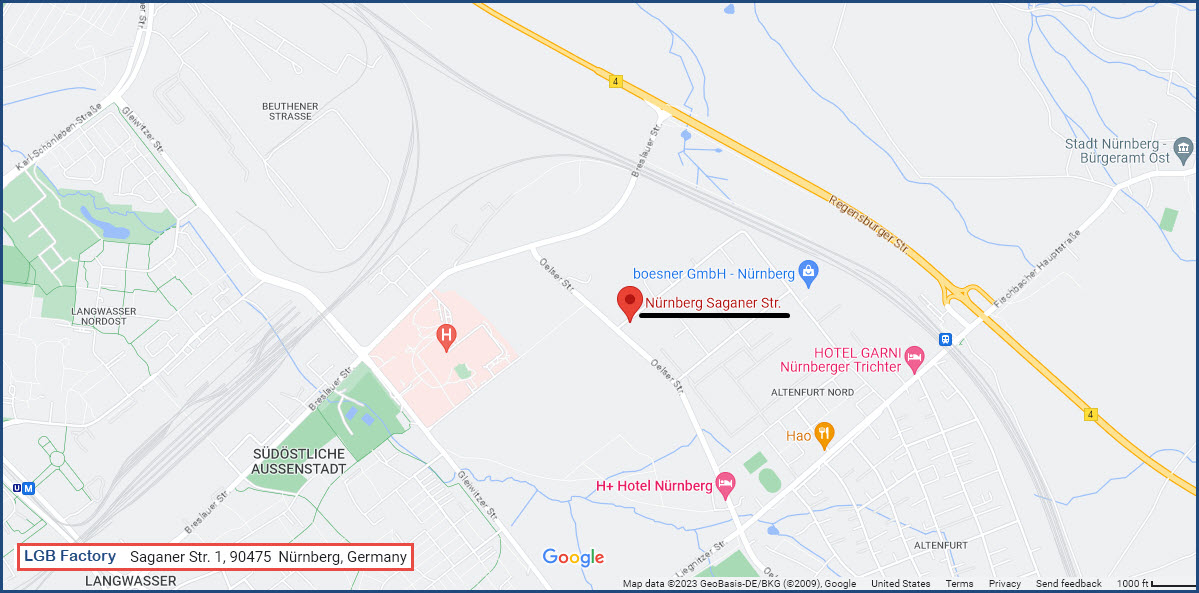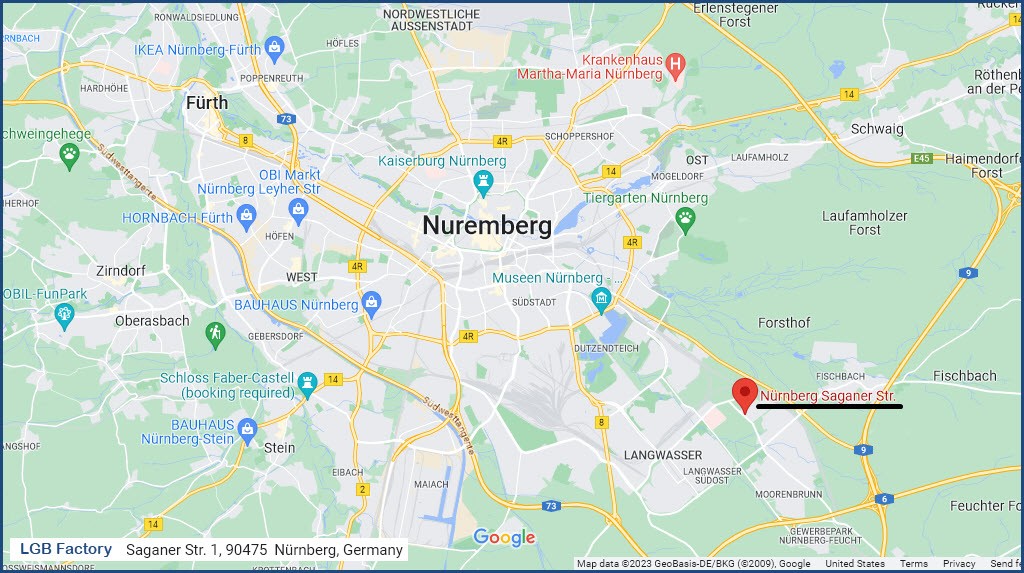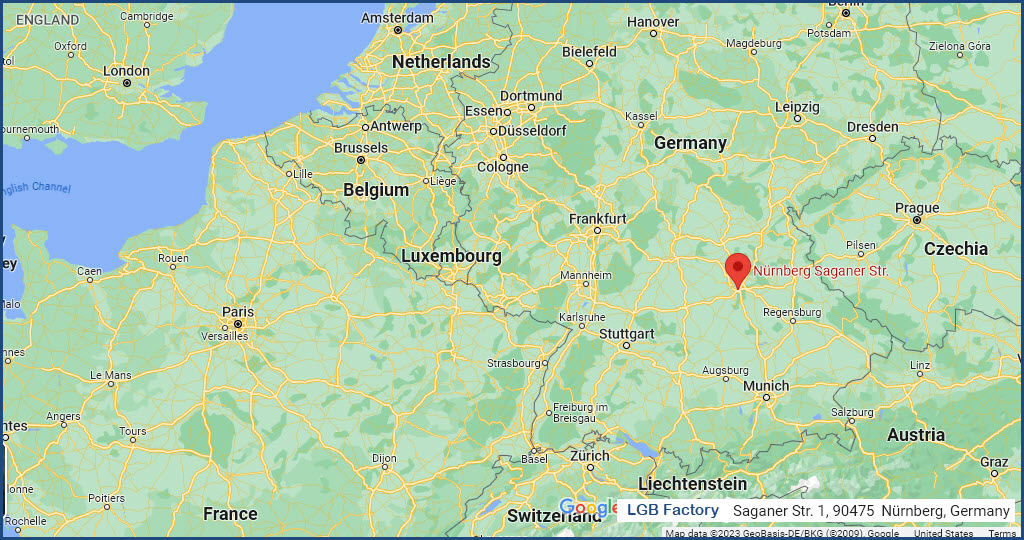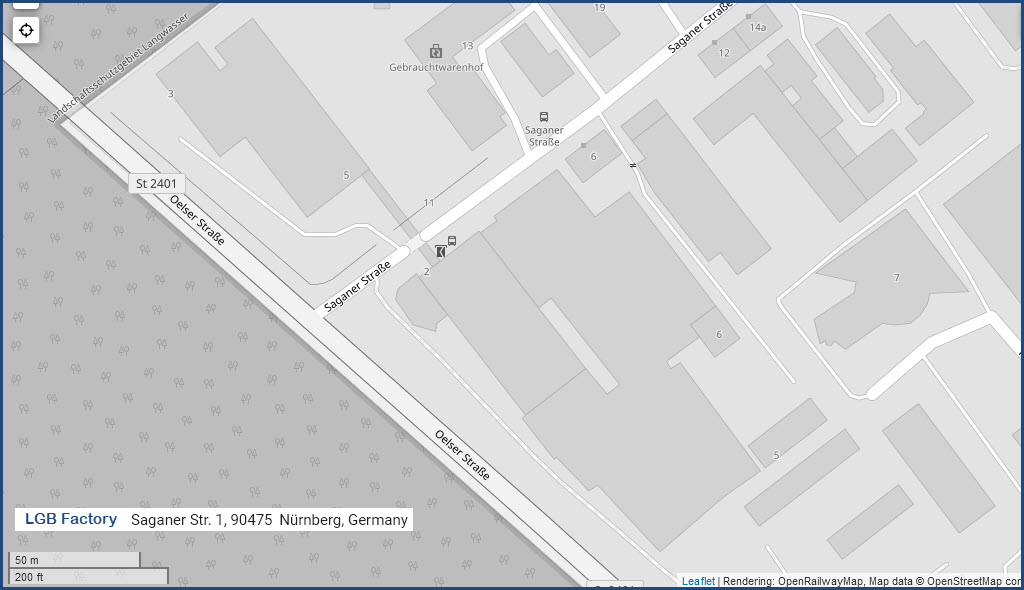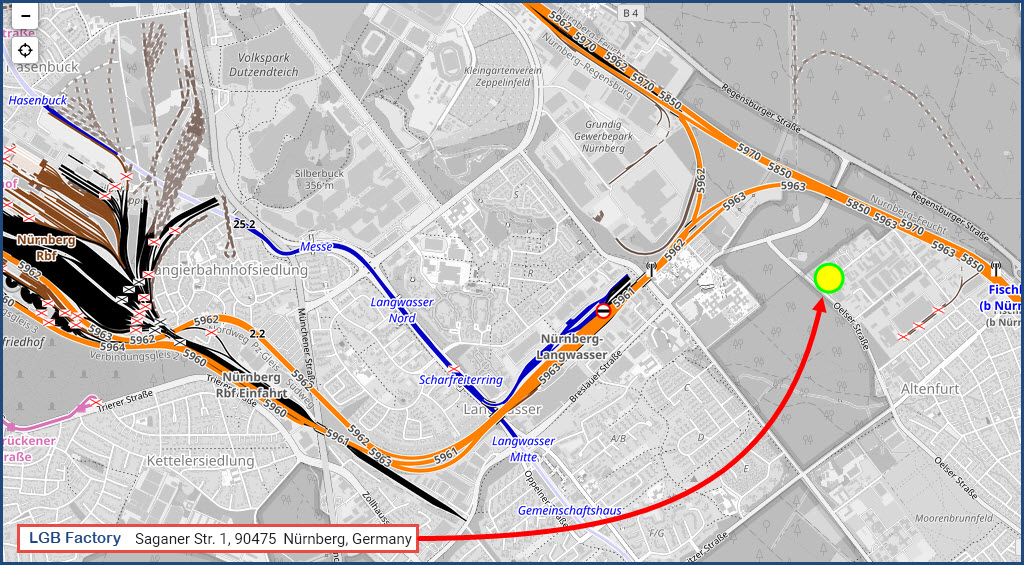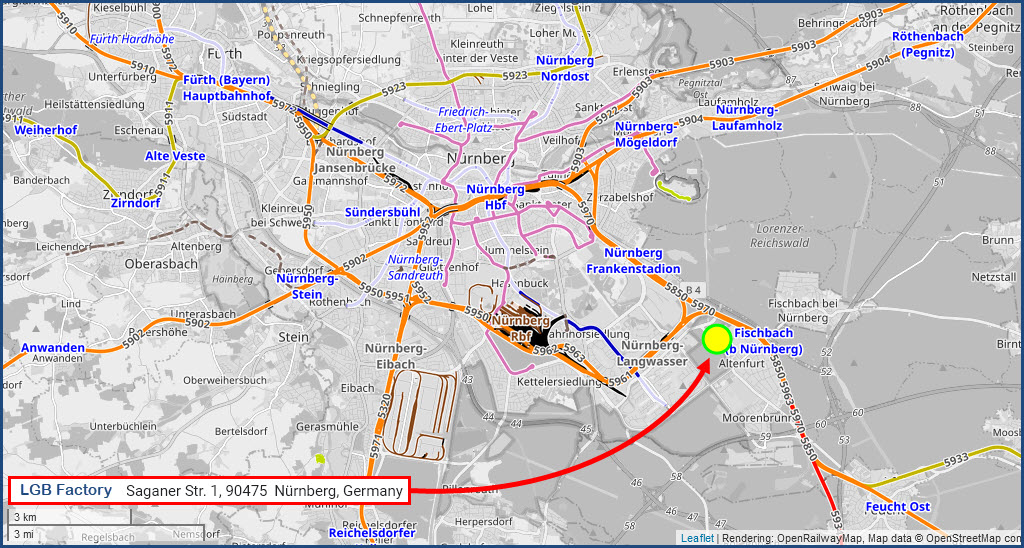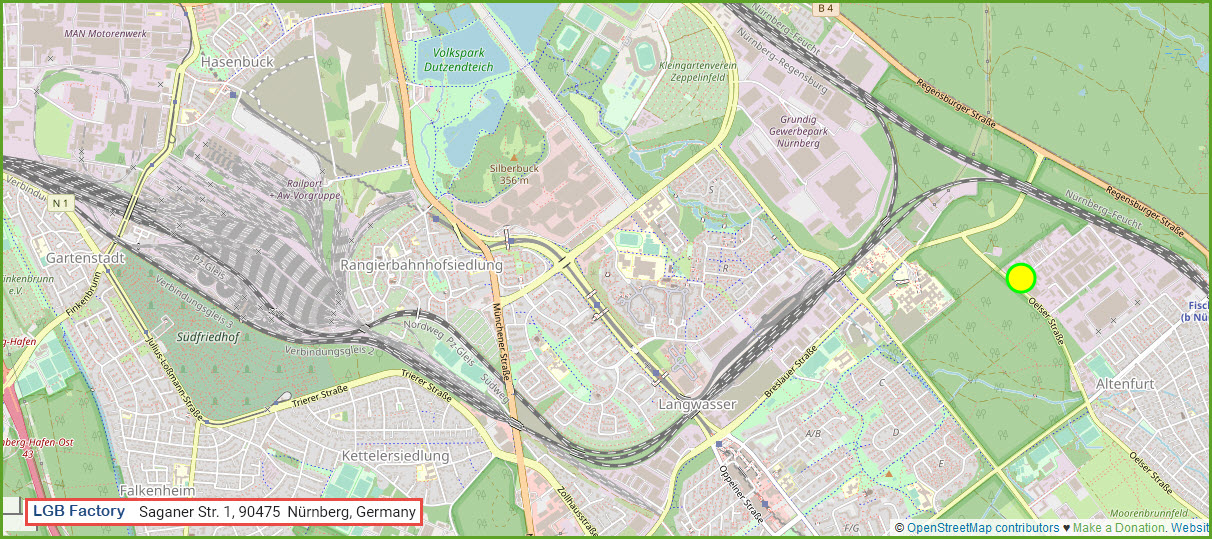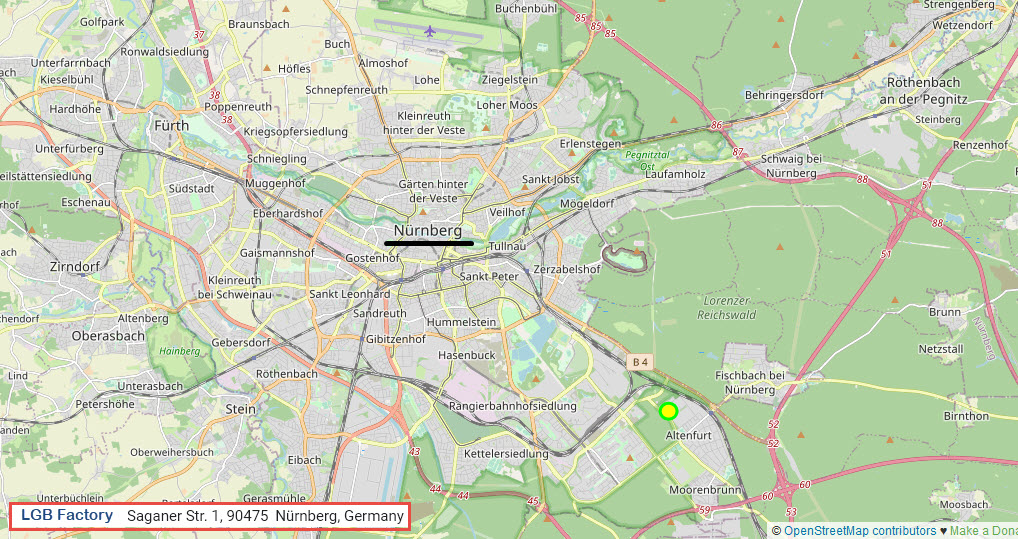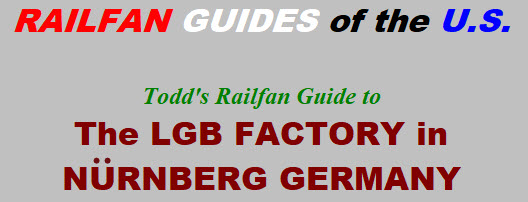
In General
Getting Here
Map
Pictures
RAILROAD SIGNALS HOME
Location / Name:
Nürnberg, Germany
What's Here:
former LGB Model Train Factory
Lots of Trains!
Data:
GPS Coordinates: 49.41388, 11.15784
Phone A/C: +49 911?
ZIP: 90475?
Access by train/transit:
None
The Scoop:
The former factory for LGB is located on the southeast side of Nürnberg. Fortunately for us, Google Streetview still has pictures of it in the LGB colors, circa 2008.
From the ogrforum: The LGB brand and concept was the brainchild of two brothers, Eberhard and Wolfgang Richter back in 1968. They literally started a revolution in garden and outdoor railroading with their robust and weather resistant products. Quality materials such as BASF Luran-S, Vestilene and Mercedes-quality paint made these plastic trains super durable. Unfortunately, Eberhard would have an untimely passing in 1984. Rolf, Wolfgang's son, who was trained as an attorney, had stepped into the family business and along with his cousin, Johannes Richter, became the third member of the family business located on Saganer Strasse in Nurnberg. Through the guidance of this family triumverate, LGB products continued to evolve both in quality and variety over several decades. In 2009, Rolf Richter unfortunately died in an auto accident at age 54, leaving a wife and four children behind. Just three years later in 2012, Wolfgang would pass, leaving Johannes as the sole family member at the helm. By that time, economic forces in Germany were not as favorable for a high-end toy company like LGB, which had been a very successful family business for several decades and there would be several important economic changes that would eventually lead to Marklin's stewardship and principle production moved to Hungary. Still high quality, but no longer a beloved family business with German-made products.
From Wikipedia: LGB stands for Lehmann Gross Bahn - the "Lehmann Big Train" in German. Made by Ernst Paul Lehmann Patentwerk in Nuremberg, Germany, since 1968 and by Märklin since 2007, it is the most popular garden railway model in Europe, although there are also many models of U.S. and Canadian prototypes. LGB caused a revival of garden model railroading in the United States when it was introduced. LGB is sold in North America through Wm. K. Walthers, who took over from Ernst Paul Lehmann's subsidiary, LGB of America, when Märklin bought the LGB assets. Most of the European prototypes were manufactured in Germany, while much of the North American rolling stock was made in China. Production was later moved to Hungary.
LGB trains are responsible for introducing "G" scale to model railroading. The scale ratio used by LGB is nominally 1:22.5, yet many dimensions are often changed to allow operation on very tight R1 curves. American prototypes especially suffer from this. Other G-scale (and Gauge 1) manufacturers produce products that range from 1:20 to 1:32, and for the most part, all use the same track and are compatible with one another. Though they can all run on the same track (45 mm gauge), models representing narrow-gauge versions of trains or locomotives would not normally be run together with models of larger full-scale vehicles. To fit the same standard track the latter must be built using different scales; for example, 1:22.5 scale passengers and/or train crew are somewhat oversized when displayed in proximity with 1:32 models. Though the models may be physically compatible, many people choose a preferred style or era, and pick one ratio (in the range of 1:20.3 to 1:32) for all of their models.
The first loco made under the LGB brand was a model of a small Austrian 0-4-0 named "Stainz", in the LGB logo. It continued in production in 2021, although with a sound system and other mechanical differences to the original 1968 model. Most garden railway enthusiasts have at least one example of a Stainz in their collection as it tends to be a robust loco with good pulling power. end Wiki
Not sure when the manufacturing was moved from Germany to Hungary.
Acknowledgements:
Google Maps
Open Railway and Open Street Map
Wikipedia
Model Railroader Magazine, maybe, if they give me permission to use their article
Websites and other additional information sources of interest for the area:
https://www.lgb.com/
http://theworldoflgb.blogspot.com/2010/12/goodbye-lgb-trains-factory.html
https://en.wikipedia.org/wiki/LGB_(trains)
https://www.youtube.com/watch?v=Zm4cklmfnIM tour of the ole factory
https://www.gscalecentral.net/threads/tour-of-lgb-factory-nuremberg.242208/
https://www.lgbtours.de/seite/115046/about-lgb-tours.html
https://ogrforum.ogaugerr.com/topic/the-richter-family
May 1988 edition of Model Railroader magazine, for a story on a visit to the factory
East/west going A6 gets you near the LGB plant location. On the "east" side of Nürnberg, take A9 north one exit to B4/Regensburger Street. Take that to either Löwenberger or Breslauer, and then to Oelser, which is the street the plant is located on.
BTW: Straße is German for Street.
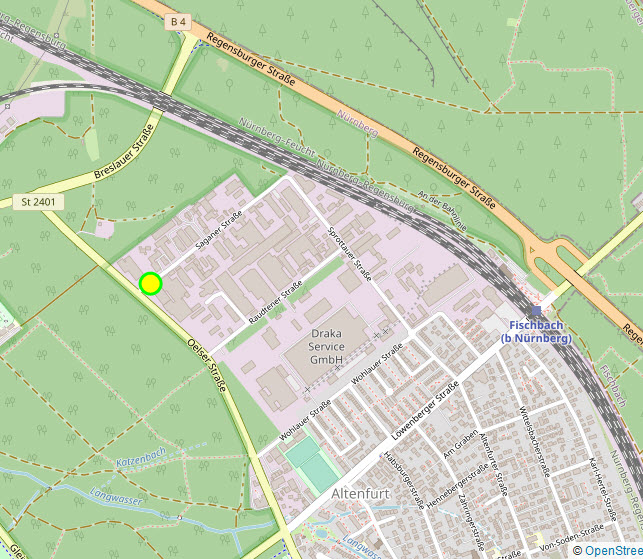
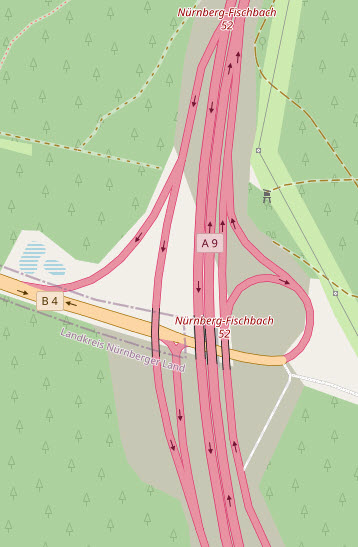
Before and "after" (actually, in the middle of repainting).... from the worldoflgb blog
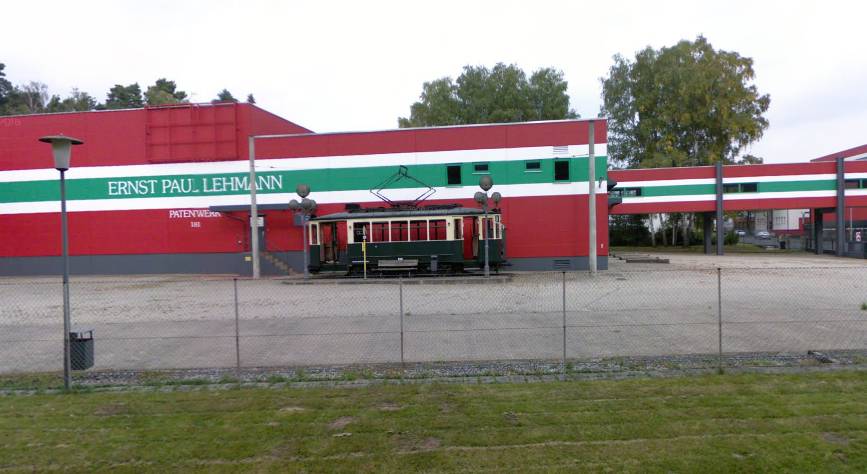
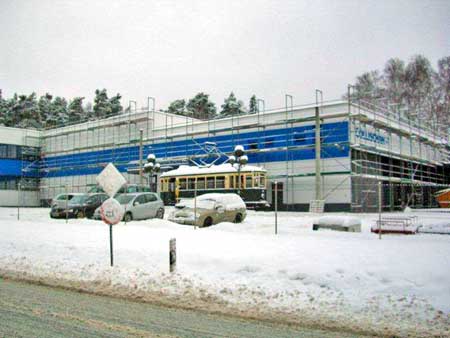
These pictures come from Google's Streetview.....
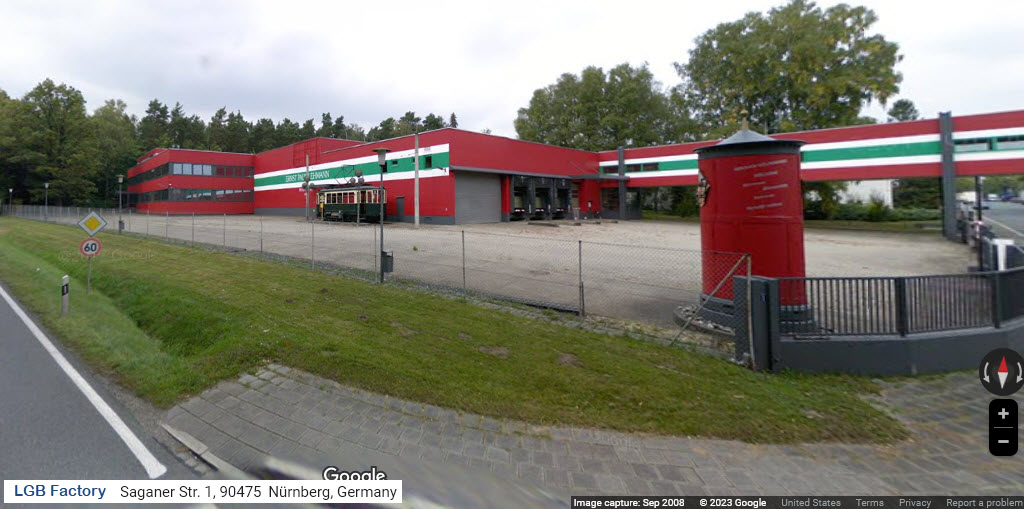
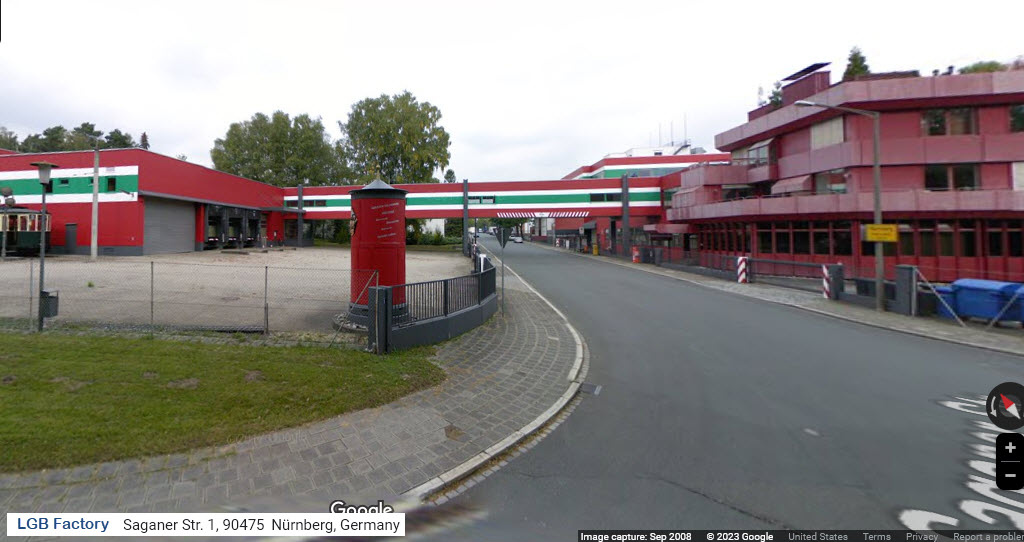
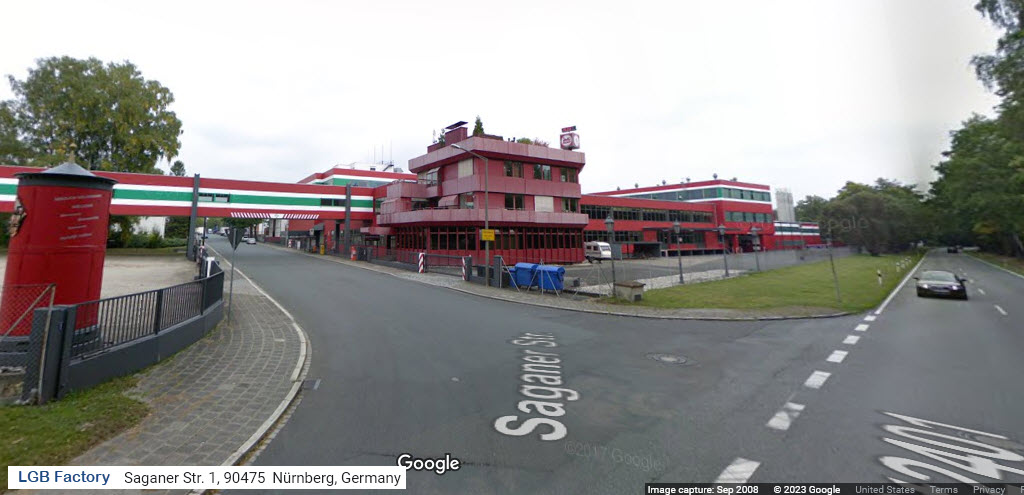
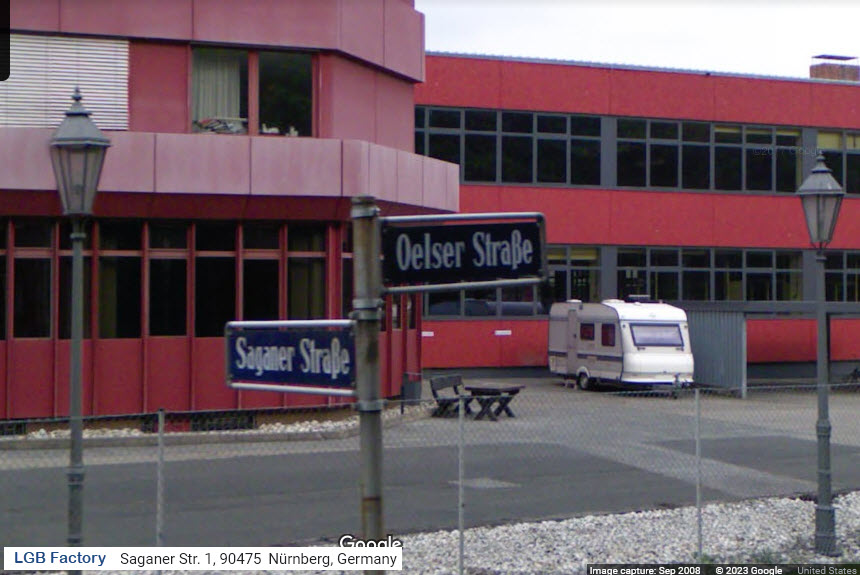
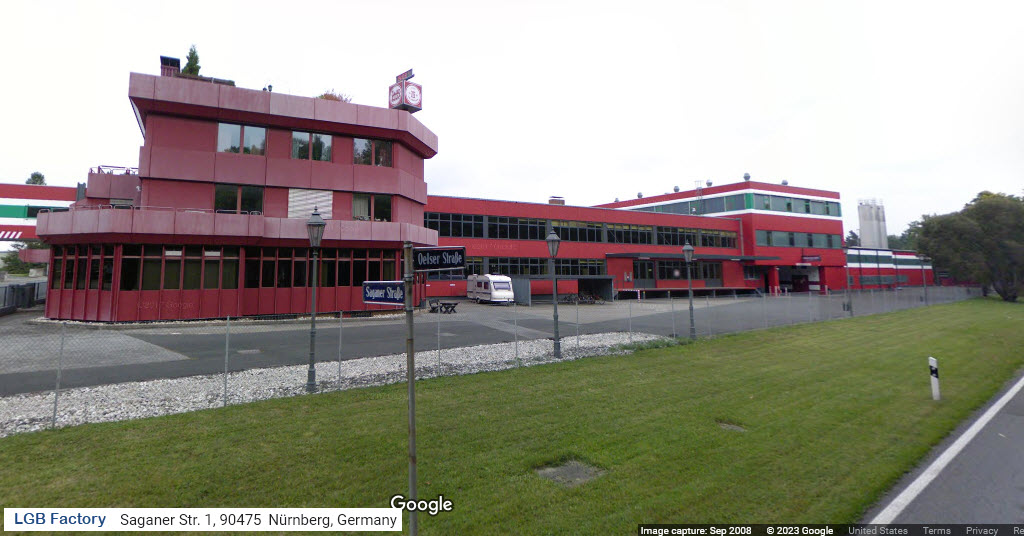
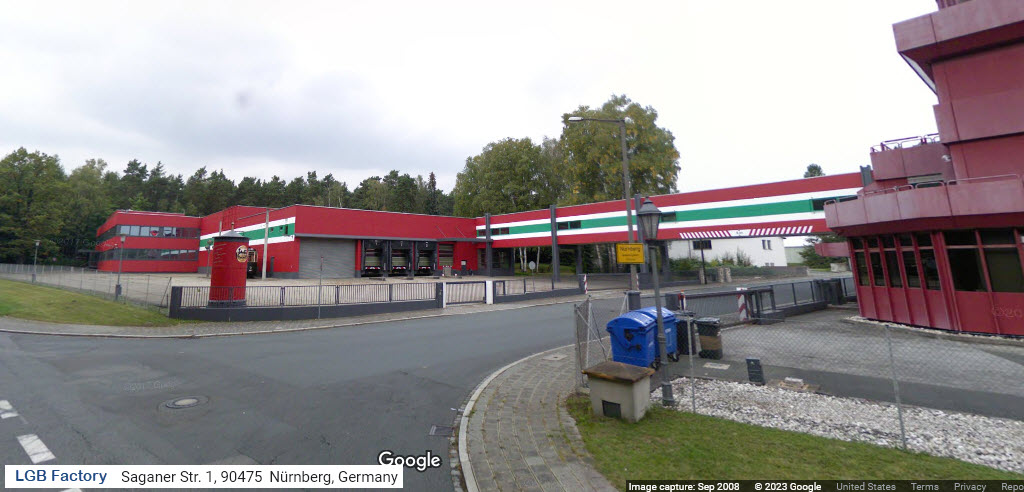
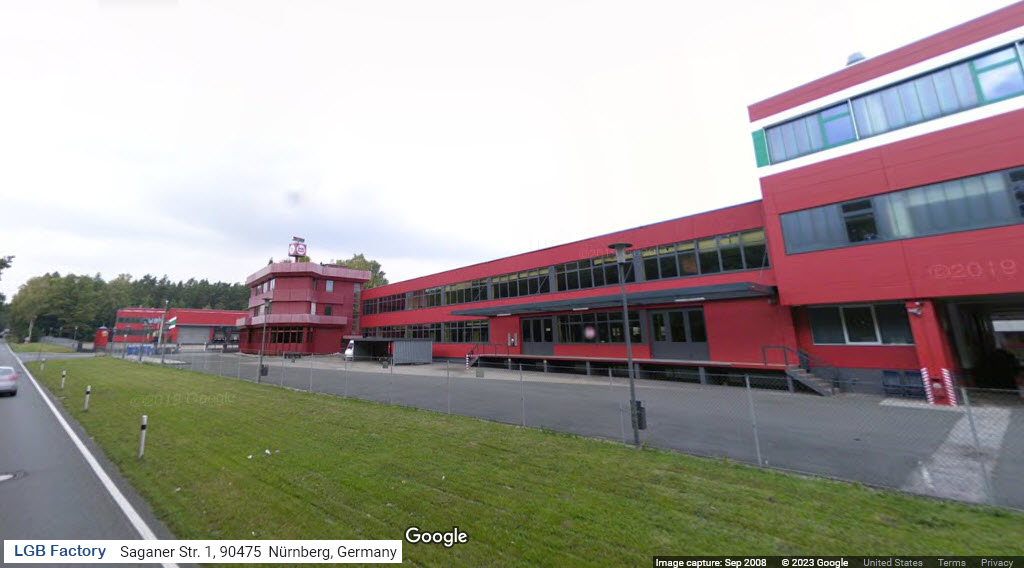
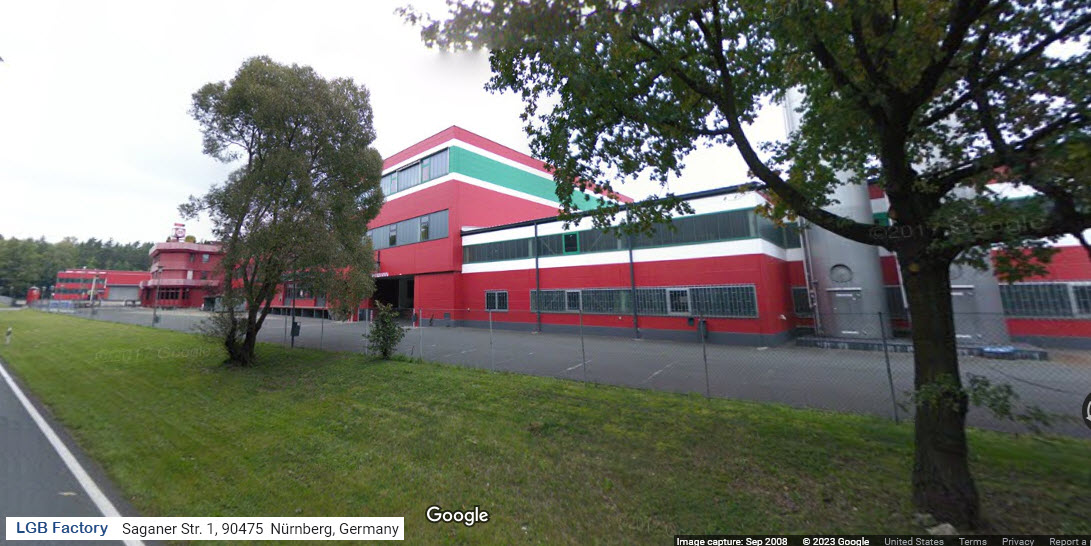
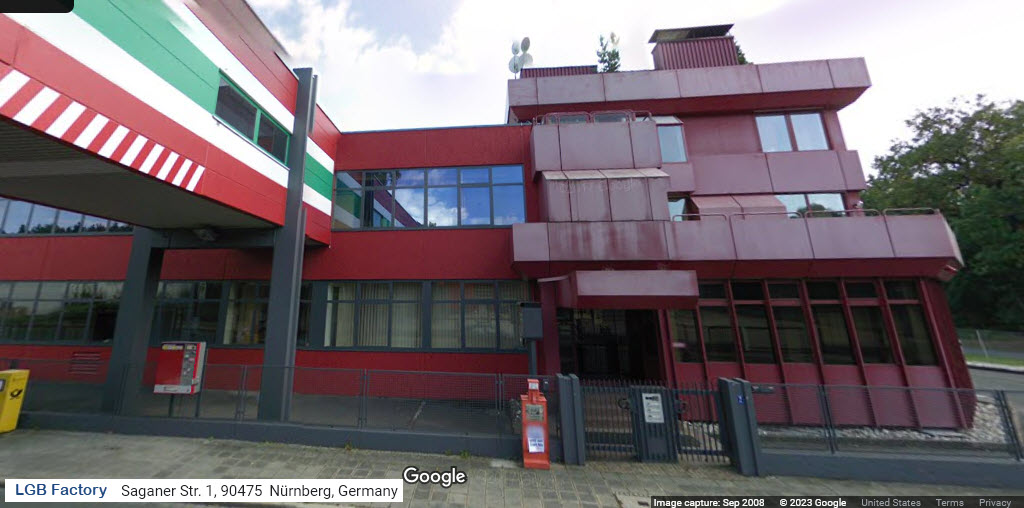
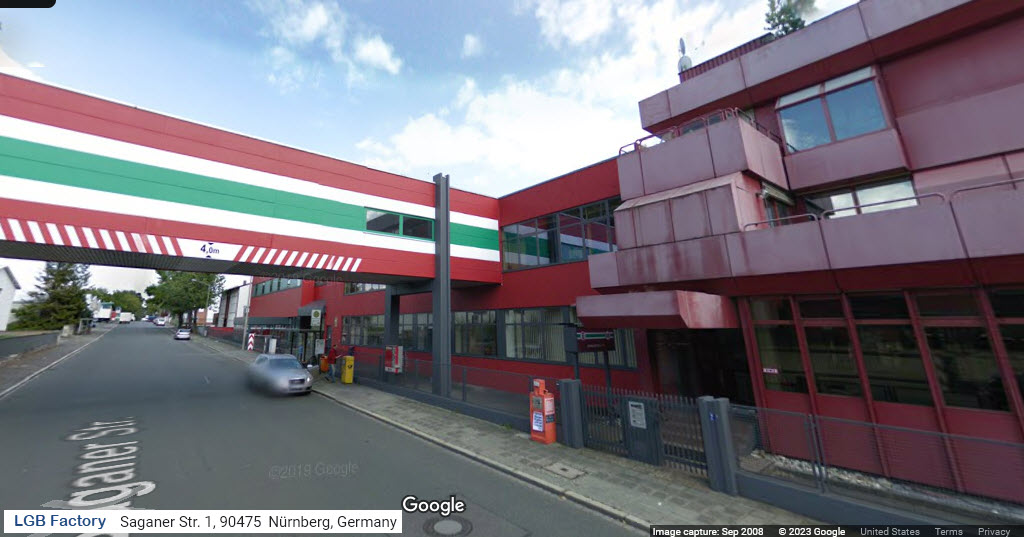
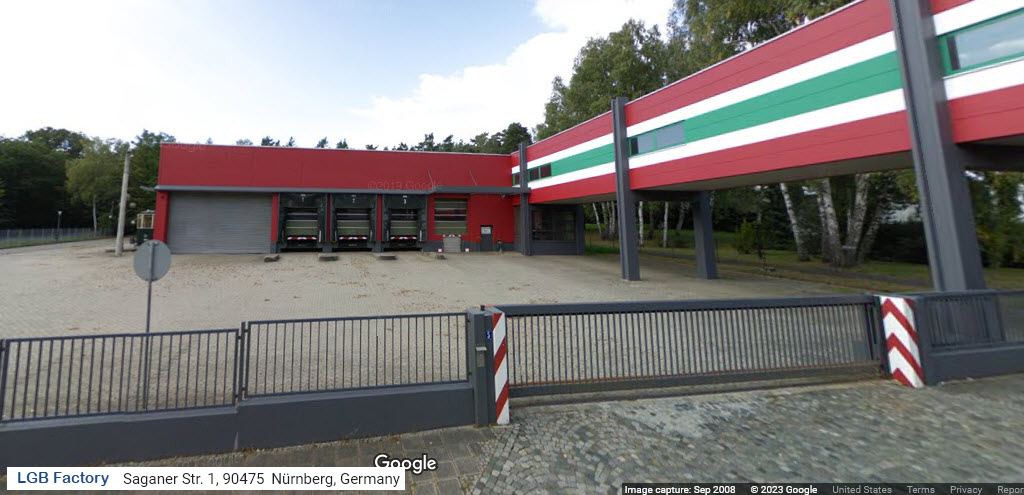
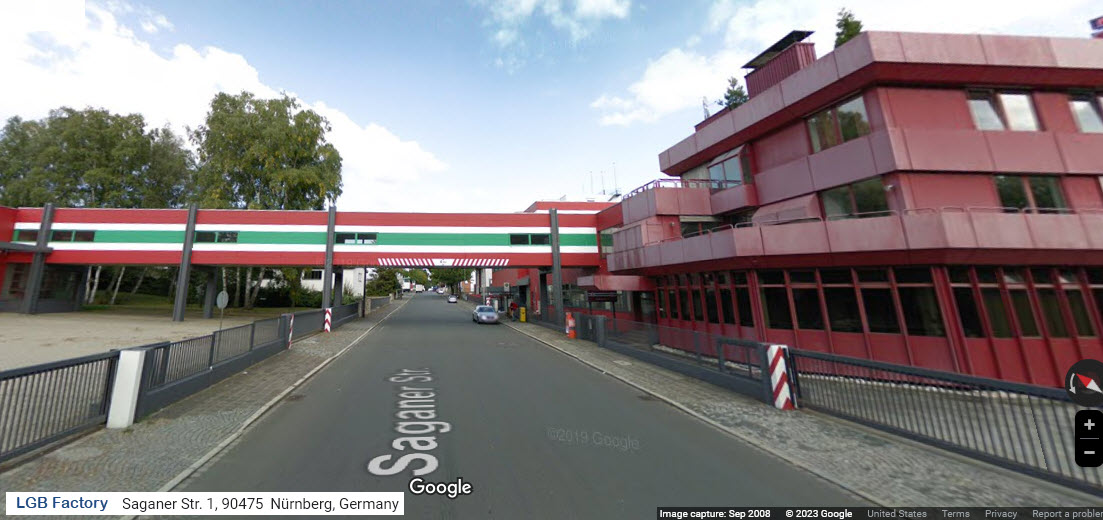
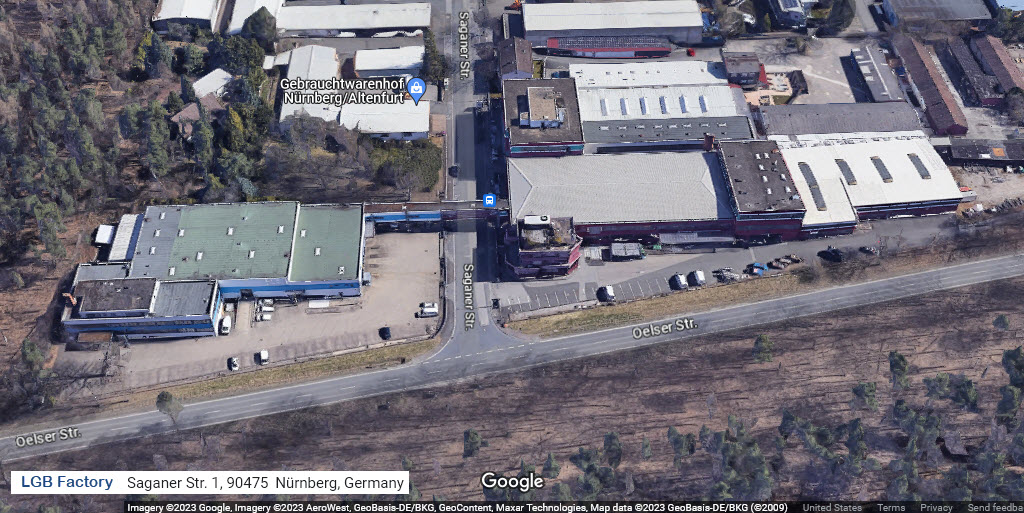
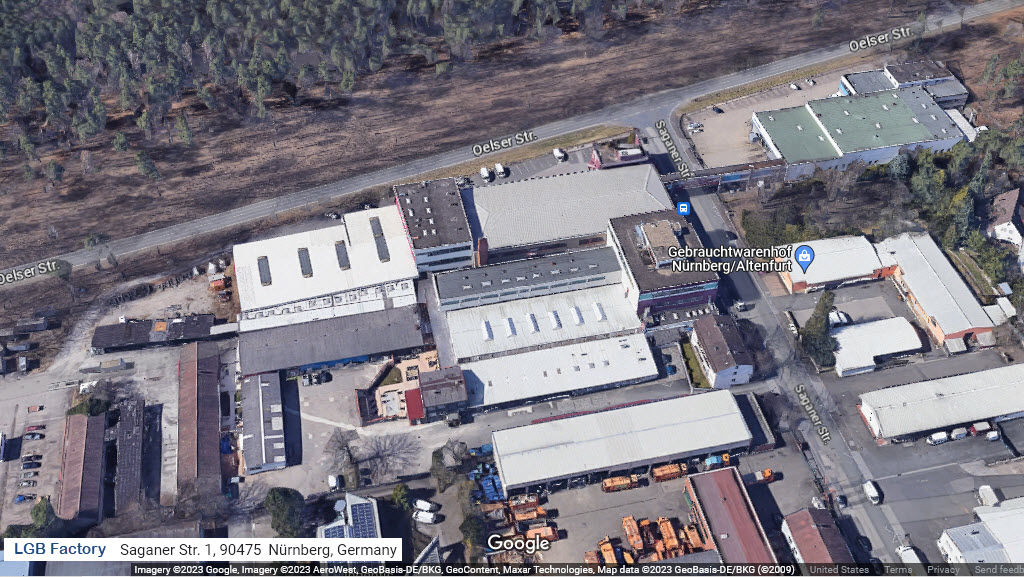
Disclaimers:
I love trains, and I love signals. I am not an expert. My webpages reflect what I find on the topic of the page. This is something I have fun with while trying to help others.
Please Note: Since the main focus of my two websites is railroad signals, the railfan guides are oriented towards the signal fan being able to locate them. For those of you into the modeling aspect of our hobby, my indexa page has a list of almost everything railroad oriented I can think of to provide you with at least a few pictures to help you detail your pike.
If this is a railfan page, every effort has been made to make sure that the information contained on this map and in this railfan guide is correct. Once in a while, an error may creep in :-)
My philosophy: Pictures and maps are worth a thousand words, especially for railfanning. Text descriptions only get you so far, especially if you get lost or disoriented. Take along good maps.... a GPS is OK to get somewhere, but maps are still better if you get lost! I belong to AAA, which allows you to get local maps for free when you visit the local branches. ADC puts out a nice series of county maps for the Washington DC area, but their state maps do not have the railroads on them. If you can find em, I like the National Geographic map book of the U.S..... good, clear, and concise graphics, and they do a really good job of showing you where tourist type attractions are, although they too lack the railroads. Other notes about specific areas will show up on that page if known.
Aerial shots were taken from either Google or Bing Maps as noted. Screen captures are made with Snagit, a Techsmith product... a great tool if you have never used it!
By the way, floobydust is a term I picked up 30-40 years ago from a National Semiconductor data book, and means miscellaneous and/or other stuff.
Pictures and additional information is always needed if anyone feels inclined to take 'em, send 'em, and share 'em, or if you have something to add or correct.... credit is always given! Please be NICE!!! Contact info is here
Beware: If used as a source, ANYTHING from Wikipedia must be treated as being possibly inaccurate, wrong, or not true.
RAILFAN GUIDES HOME
RAILROAD SIGNALS HOME
NEW 06/16/2023
Last Modified 17-Jun-2023
